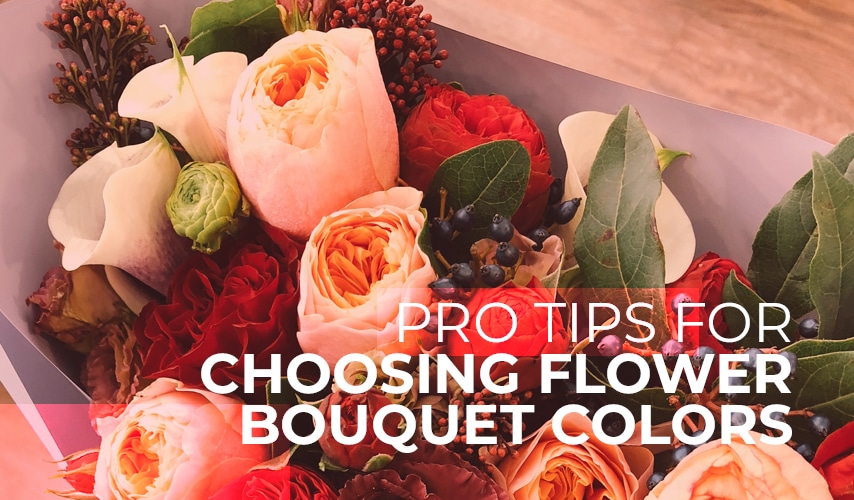Flower bouquets are naturally beautiful. But they can be awe-amazing with the right flower combinations. Whether sending flowers as gifts or using them for a special occasion, you can use some tips for choosing flower bouquet colors.
Here’s a guide to help you decide on choosing the best color combinations for your flower bouquet.
3 Tips for Combining Flower Bouquet Colors
1. Remember the basic colors.
Flowers, as mentioned, are naturally beautiful, You’ll need basic modifications to make a nice bouquet. Start by getting familiar with the basic colors.
- Primary: Red, Yellow, and Blue
- Secondary: Orange, Green, and Violet
- Tertiary: The result of combining one primary color and one secondary color
- Complementary/Contrasting: Color “pairs” found across each other on the color wheel
- Analogous: Colors that are adjacent to each other on the color wheel
- Monochromatic: A single color or variations of one color
2. Take note of the color wheel.
Remember R-O-Y-G-B-I-V? It’s not just for elementary art classes. The color wheel can also serve as your guide in choosing the right flower bouquet colors to combine as these are represented in the florists’ color wheel.
Getting presented with a wide variety of flowers and foliage could be overwhelming, but with the florists’ color wheel, choosing flower bouquet flowers is simpler and it will also allow you to organize your design process and create harmonious arrangements. Know the basic colors and how they relate to each other to create beautiful flower arrangements.
3. Stick to basic methods.
There are flower bouquet color schemes that use different color combinations. Take note of the basic methods when choosing a flower bouquet.
- Complementary color combinations – This flower bouquet is made up of any two colors that are opposite each other in the color wheel.
Example: yellow and violet
- Split complementary color combinations – Be creative with your flower bouquet. Choose colors from one side of the wheel then add two colors that are next to the opposite side.
Example: yellow plus blue violet and red violet
- Analogous color combinations – This method allows the creation of flower bouquets with cohesive color combinations as it uses three colors that are next to each other.
Example: red violet, violet, and blue violet
- Monochromatic – For flower bouquets with focus and consistency, this is the method to follow. It uses one color to allow texture and tone to stand out.
- Triadic color combinations – For this method, three flower colors are used as long as they are equally distanced as seen on the color wheel.
Example: violet, orange, and green
More tips for choosing flower bouquet colors…
- You can incorporate pastel shades if you want a soft touch to your flower bouquet. Pink, peach, and cream are shades that add texture. They also create a sense of romance to ordinary arrangements.
- To create a natural look, add pale green, yellow, and lavender to any arrangement.
- Don’t restrict yourself to the rules in using colors. Flowers are basically beautiful on their own.
- Choose a good florist. They are the experts in flower arrangements and their skills and experience can provide you with the best bouquets.
ALSO READ: A Comprehensive Guide to Funeral Flowers
Want to save time and still have the best flowers? The Flower Patch Shop can help you create the best flower bouquets for all types of occasions. Send us a message today so our expert florists can craft the perfect flower arrangement based on your preferences.




